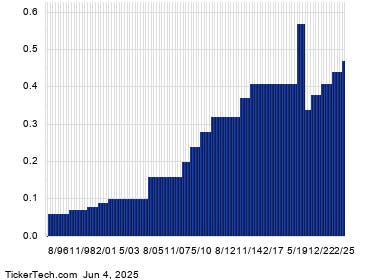The federal government is continuing to do what it has done for decades; spending more than it collects. Though this may not be surprising, it should be alarming. Why? Because as the national debt continues to rise, the government will be required to pay more and more of its revenue to service the debt. This will leave less money for everything else such as benefits for many Americans and dealing with the next crisis.
The Last Federal Government Balanced Budget
The federal government’s fiscal year ends September 30, 2025. The budget deficit is expected to be about $2.2 trillion. With Washington spending at such high levels is a balanced budget even possible? The last time the federal government balanced its budget was during the Clinton administration, when Republicans controlled both houses of Congress. This occurred between 9/30/1997 and 9/30 2001. The average budget surplus during this time was $139.8 billion. Since then, and especially since the global pandemic, federal spending has exploded while revenue has lagged. The last federal budget surplus prior to 1997 occurred in 1969, when Democrats controlled both sides of Congress. Going back to the federal budget of 1901, Congress has had a budget surplus in only 31 of the past 124 years (25%) and in 4 of the past 55 years (7%).
Based on the recently passed budget in the House, it’s clear that neither party is willing to take the difficult action necessary to bring the federal budget back in line. It was assumed that DOGE would bring financial salvation to Washington, but the waste, fraud, and abuse proved to be less than anticipated. In fact, Elon Musk just voiced his disgust on X (formerly Twitter) over the current bill awaiting Senate approval. He wrote, “I’m sorry, but I just can’t stand it anymore. This massive, outrageous, pork-filled Congressional spending bill is a disgusting abomination. Shame on those who voted for it: you know you did wrong. You know it.” Those are harsh words from the man who started the DOGE effort.
Federal Budget Surplus-Deficit Since 1990
For decades, Democrats were widely considered to be the party of excessive spending. Today, it appears that Republicans are equally culpable. For a more thorough look, let’s examine the following chart which shows the annual budget surpluses and deficits in each fiscal year from 1990 to 2024. The chart also contains a projection of deficits from 2025 through 2034. Note that the future numbers are derived from the recommended levels for overall spending limits, revenue targets, and deficit levels for the period 2025 through 2034, included in the bill (H.Con.Res.14).
The chart can be divided into four distinct segments of time including the last time the federal government budget had a surplus, the deficits resulting from the Financial Crisis and Covid-19, and the recommended deficit levels over the next 10 years. It’s interesting to note how the deficits swelled during the two most recent crises and how spending remained elevated afterwards. This is because once Congress expands spending, it rarely reduces spending after an event has passed.
Let’s take a closer look at this. The largest deficit prior to the financial crisis was $412.2 billion in the fiscal year ending 9/30/2004. Using the largest deficit prior to the financial crisis as a baseline, the smallest deficit since then was $441.9 billion, which occurred in FY ending 9/30/2015. The deficit reached a whopping $1.4 trillion in FY ending 9/30/2009 and an even larger shortfall of $3.13 trillion in FY ending 9/30/2020.
As the chart clearly demonstrates, deficits have been extreme in the years following the Financial Crisis. In short, every deficit since the financial crisis has been worse than the largest deficit prior to the crisis. It’s clear that Congress has a spending problem.
Federal Budget Overview
Currently, interest payments on the national debt are the third largest budget expense, surpassing defense spending. The interest expense on the debt is about $1.026 trillion in the current fiscal year. The only budget items larger than servicing the debt are Medicare/Medicaid and Social Security. As the national debt continues higher, and especially if interest rates rise, servicing the debt could surpass Social Security and Medicare/Medicaid to become the largest item in the federal budget. At that point it will become increasingly difficult to service the debt.
If the one big, beautiful bill is passed by both houses, the national debt is expected to rise even further. While DOGE worked to reduce federal spending, this bill will increase spending, leading to even larger deficits, which will be added to the national debt. It’s clear that a reduction in federal spending will require a great deal of courage, focus, and cooperation from both parties. Will Congress become fiscally responsible? Not to sound pessimistic, but that doesn’t appear likely. Why? Because doing so will cause a degree of economic pain and if the resulting anger is directed at either party, that party will likely suffer at the polls. Therefore, this problem needs to be addressed by both parties and in this divisive time, cooperation seems highly unlikely.
Read the full article here
















